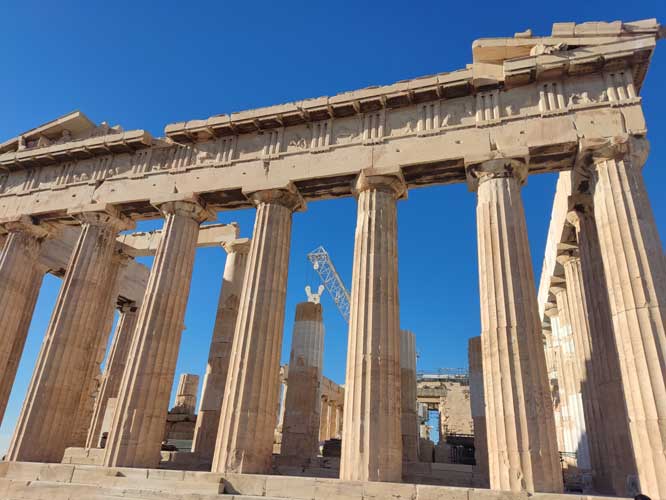Table of Contents
- Introduction
- Historical Background
- Architectural Features
- Cultural and Religious Significance
- The Parthenon Sculptures
- The Statue of Athena
- Legacy and Conservation
- Conclusion
Introduction
The Parthenon stands as one of the most iconic and enduring symbols of ancient Greek civilization. Perched atop the Acropolis of Athens, this magnificent temple was dedicated to Athena, the city's patron goddess. Its architectural brilliance and historical significance continue to captivate historians, architects, and visitors from around the world.

Historical Background
The construction of the Parthenon began in 447 BCE during the height of the Athenian Empire, under the leadership of Pericles. It was built to replace an earlier temple destroyed by the Persians in 480 BCE. Designed by the architects Iktinos and Kallikrates, and overseen by the sculptor Phidias, the Parthenon was completed in 438 BCE, though decoration work continued until 432 BCE.
Architectural Features
The Parthenon is a masterpiece of Doric architecture, with some Ionic elements. It features a rectangular floor plan, 69.5 meters long and 30.9 meters wide, with 8 columns on the short sides and 17 on the long sides. The use of entasis, a slight curvature in the columns, corrects optical illusions and gives the temple a perfectly symmetrical appearance. The inner chamber, or cella, housed a massive statue of Athena Parthenos, crafted by Phidias from gold and ivory.

Cultural and Religious Significance
The Parthenon served not only as a religious sanctuary but also as a symbol of Athenian democracy and cultural achievement. It was a place of worship and a treasury, where offerings and treasures were stored. The temple celebrated Athena, the goddess of wisdom, warfare, and crafts, embodying the city's values and aspirations. The Parthenon's festivals, such as the Panathenaic Procession, were central to Athenian religious life.
The Parthenon Sculptures
The Parthenon is renowned for its exquisite sculptures, which adorned the metopes, frieze, and pediments. The metopes depict various mythological battles, while the continuous frieze represents the Panathenaic Procession. The east and west pediments illustrate the birth of Athena and her contest with Poseidon for the patronage of Athens. These sculptures are celebrated for their intricate detail and dynamic compositions.

The Statue of Athena
At the heart of the Parthenon stood the statue of Athena Parthenos, an awe-inspiring creation by the sculptor Phidias. This colossal statue, approximately 12 meters tall, was made of gold and ivory. Athena was depicted standing, dressed in a chiton, holding a shield in one hand and a small statue of Nike (Victory) in the other. Her helmet featured a sphinx and griffins, adding to her majestic presence. The statue symbolized the strength, wisdom, and divine protection Athena provided to Athens.

Legacy and Conservation
Throughout history, the Parthenon has undergone numerous changes, serving as a Christian church, a mosque, and enduring damage from conflicts. Today, it stands as a UNESCO World Heritage Site and a symbol of classical heritage. Conservation efforts continue to preserve its structure and sculptures for future generations. Controversies, such as the debate over the return of the Parthenon Marbles from the British Museum, highlight ongoing efforts to honor and protect this cultural treasure.
Conclusion
The Parthenon of Athens remains a testament to the artistic, architectural, and cultural achievements of ancient Greece. Its enduring beauty and historical importance make it a vital link to our shared past. As we continue to study and preserve the Parthenon, it stands as a reminder of the ingenuity and spirit of the ancient Athenians, inspiring awe and admiration across millennia.
Interested in Greek mythology ? Visit our blog here

